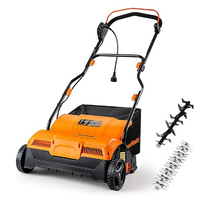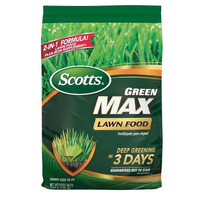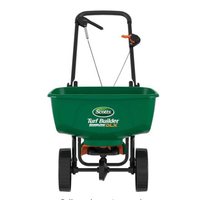9 tips to revive dead grass and make your lawn green again
Here’s 9 tips to revive dead grass
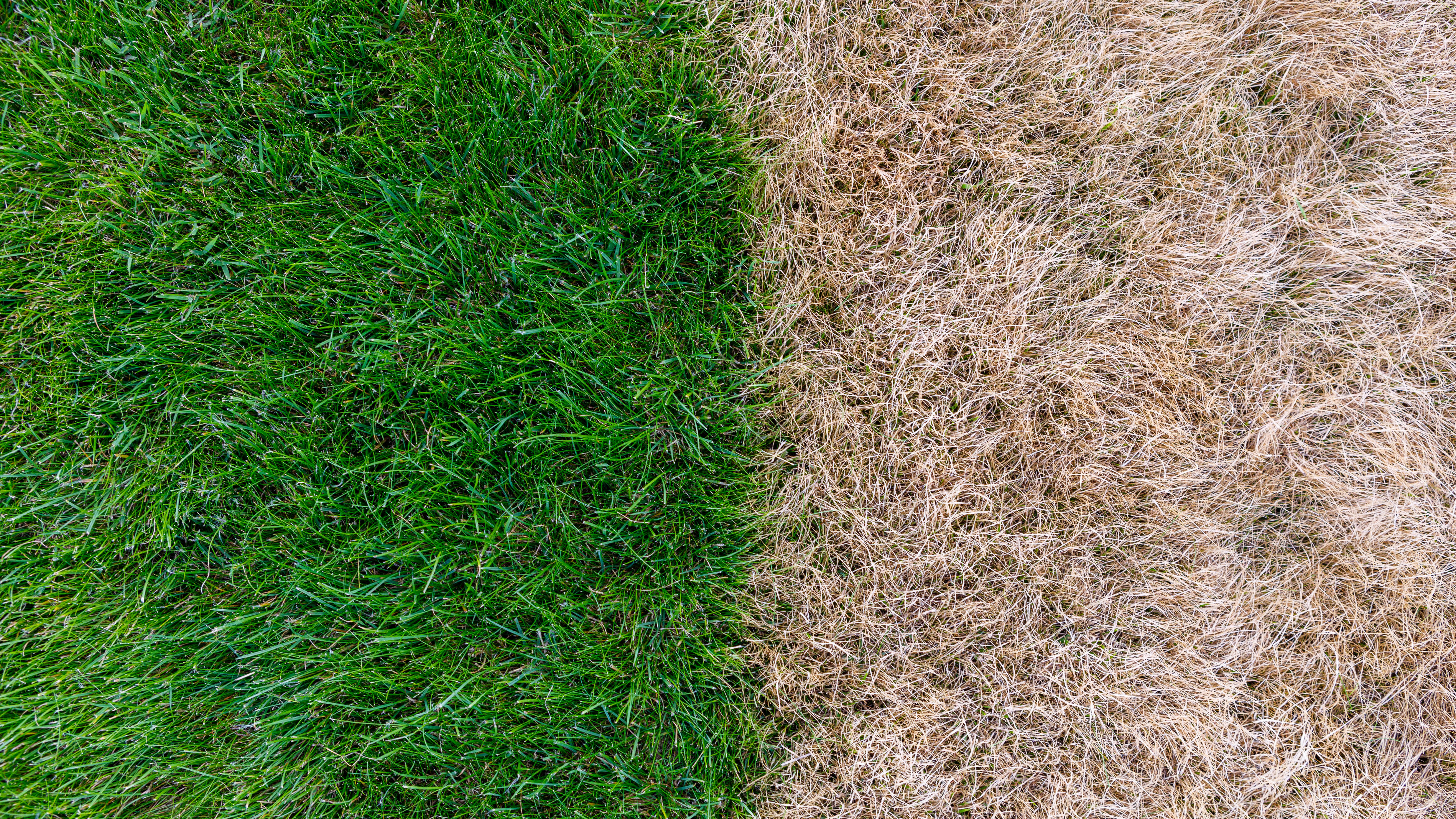
Does your once green, lush lawn now look brown and lifeless? Apart from the heat and a lack of water that can cause a lawn to die, increased activity during warmer months can take its toll. Whether from playing games or using the lawn as a pathway, the extra wear and tear will cause your lawn to turn yellow and die back.
However, problems with dying lawns aren’t just restricted to the summer months. Apart from reviving your lawn in the fall, you can also bring it back to life in the spring, in readiness for summer. Taking care of your lawn is an all-year round task.
Knowing how to overseed your lawn and how to do it the right way will help, but there are plenty of other ways to bring your lawn back to life. To help restore your lawn to its green glory, we’ve listed 9 tips to revive dead grass. From fertilizing advice to soil aeration, follow these tips, and your lawn will look thick and vibrant to enjoy once again.
How to know if your lawn is dead
Before you tackle your dried lawn, you'll need to know if your grass is dead or dormant. During the cool season, if your grass looks brown and dead, it could still be alive but dormant. If it is dead, it will appear brown, flat, and lifeless, and will no longer retain its vibrant green color or maintain an upright stance. And, sadly, if your grass is dead, there's nothing you can do to bring it back to life. However, if your grass is dormant, it may still look the same, but the difference is that it can be revived. During its dormant phase, cool-season grass conserves nutrients and energy to survive the summer heat and keep the roots alive.
Other signs to look out for include distinct patterns, areas, or circles of brown grass, as it tends to look consistent when the grass is dormant. If you notice patchy areas, it may be a sign that part of the grass is dead. But there's one way to tell for sure and that's by doing a tug test.
Do a tug test
A tug test will prove whether your grass is dead or dormant. It's a simple method to show the state of your grass, and it doesn't require any equipment. All you need to do is pull a handful of grass from your lawn. If you feel some resistance, the roots are alive, and the grass is dormant, but if the grass comes away easily, it's a sure sign that your grass is dead.
Sign up to get the BEST of Tom's Guide direct to your inbox.
Get instant access to breaking news, the hottest reviews, great deals and helpful tips.
How to revive a dried lawn
If you discover your grass is dormant it's still alive and can spring back to life after about 10 to 14 days by following the steps below.
1. Dethatch your lawn
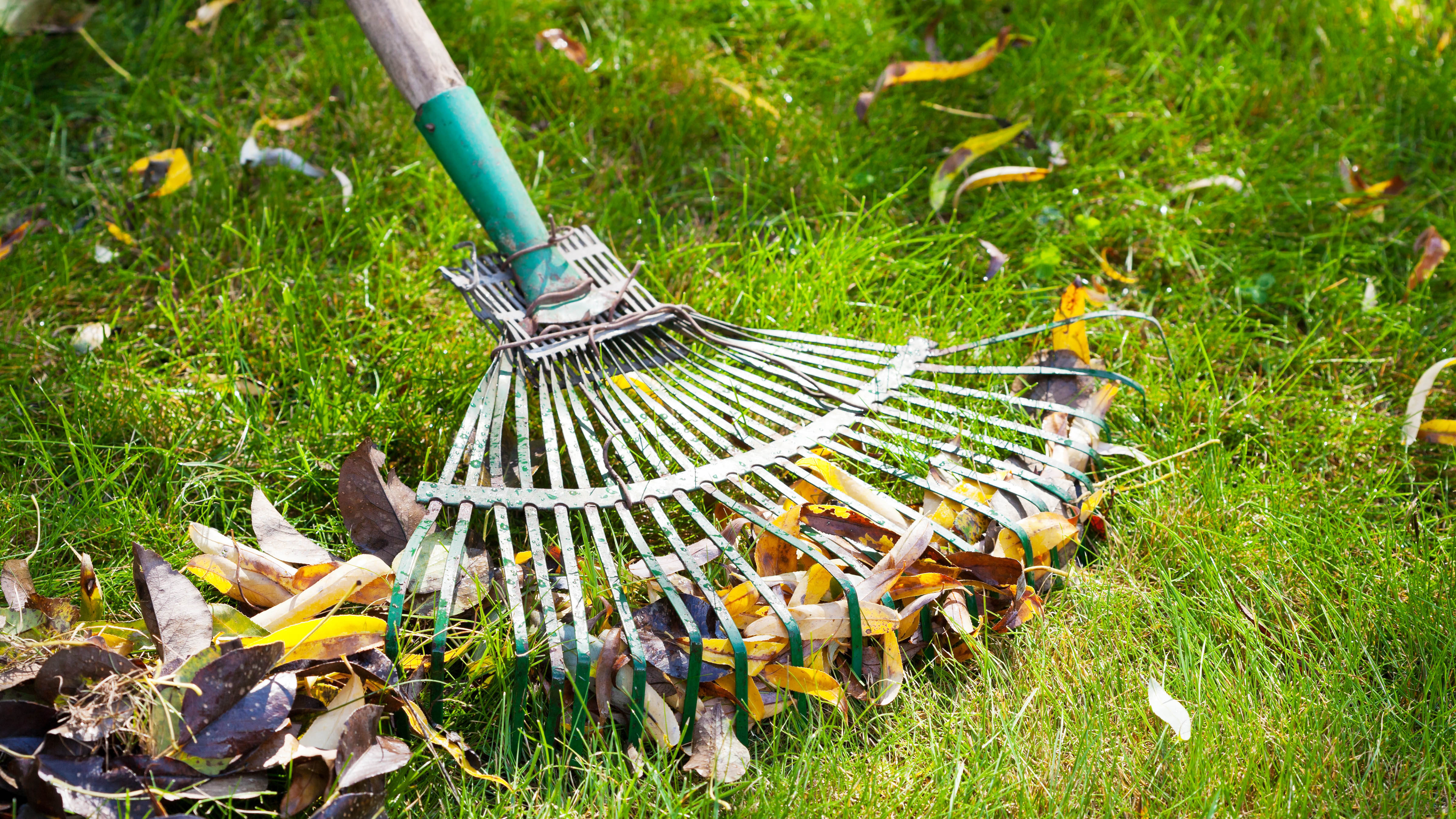
The first step is to dethatch the lawn. This involves raking it over to allow air or moisture to penetrate the grass better.
Thatch is a layer of decomposing plant materials, such as dead leaves, that builds up on the surface of the soil. If it gets thicker than half-an-inch, this can prevent your lawn from getting enough air, water and nutrients. It also prevents healthy root development and can make your grass prone to insect and disease issues.
You don't need to invest much in equipment as an everyday rake will do a good job, although a specialized thatching rake will make your life a little easier. But if you have a large yard, you might want to consider an electric dethatcher, which will save you time and energy.
It's best to start by mowing your lawn to about 2 inches and gathering up any leaves and clippings before dethatching. Then, use your dethatching rake as you would when gathering leaves, but you might have to go over the same patch three times. Then clear up the exposed thatch and add it to your compost heap. If you are using an electric dethatcher, it might even clear up the thatch as you go.
LawnMaster GVB1316 electric Dethatcher and Scarifier: was $159 now $149.99 @ Amazon
This 2-in-1 dethatcher and scarifier dethatches your lawn to provide more nutrients and sunlight, while the scarifier cuts grooves to improve water and air circulation. With a 16-inch wide path, adjustable height and a 13 Amp motor, it's equipped to tackle the toughest of lawns and comes with a 12 gallon collection bag.
2. Aerate the soil
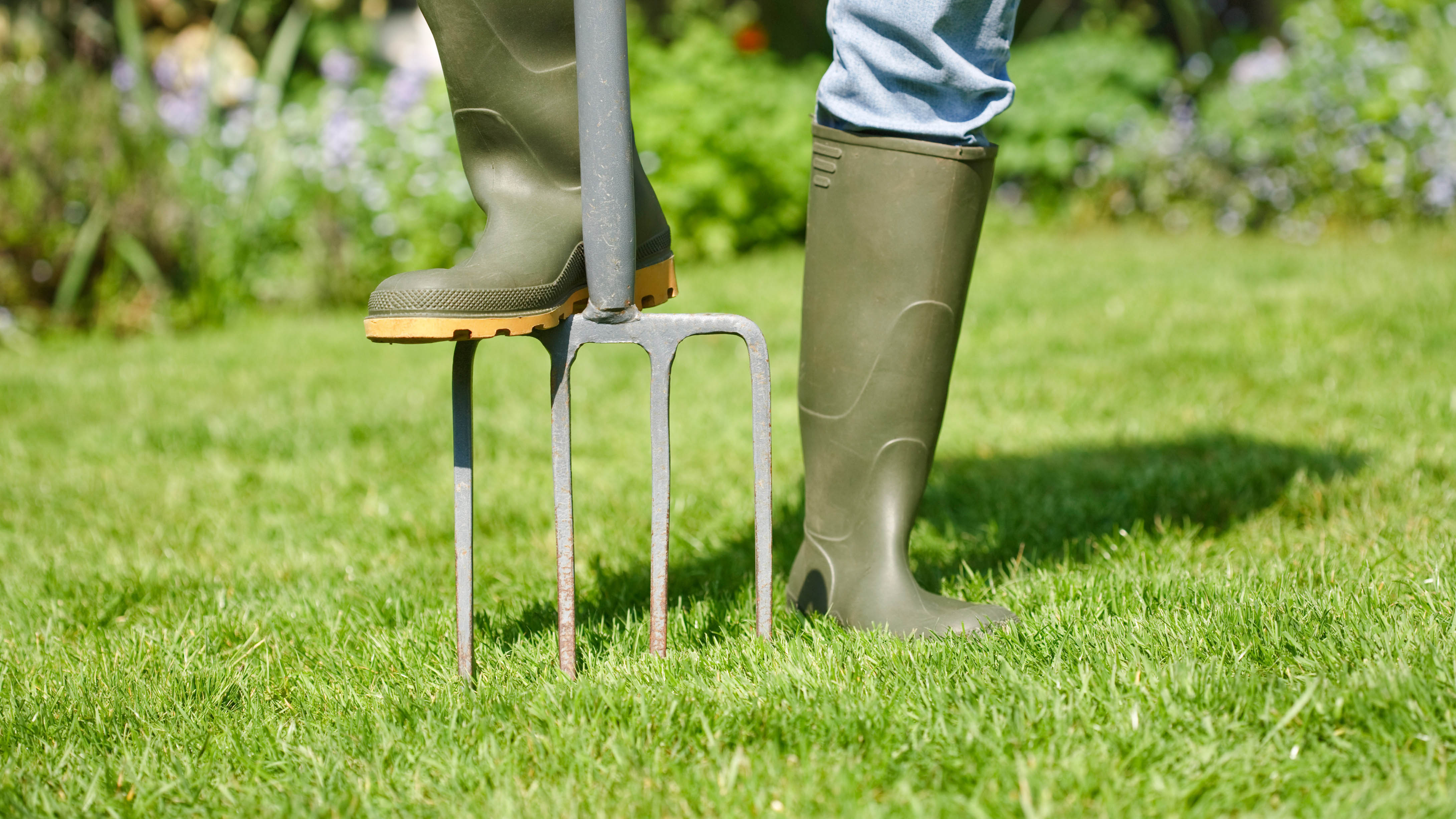
Johnsons Lawn Seed explains that when the lawn is regularly used the soil can become compacted, which can lead to drainage, weed and moss problems. And when we have a particular wet period, weeds and moss thrive.
When the soil is too dense, it prevents air and moisture from penetrating the surface, which can eventually kill the grass. Aerating your lawn helps solve this — it punctures the ground, allowing air, water and nutrients reach the roots.
Knowing how to aerate your lawn will help it receive all the nutrients it needs to thrive. Firstly, choose between a spike or core aerator. A spike aerator will leave much smaller holes than a core aerator, removing larger chunks of soil. You can buy either manual or electric tools to help you complete the task. The day before you aerate your lawn, give it a water, this will help to loosen the soil and make aeration easier, as you'll want the ground to be soft. However, if it is too wet and muddy, you're best to leave it a while to dry out. Once you start, work across your lawn in an up-and-down direction and then back and forth from a perpendicular angle, covering the whole area twice.
A core aerator will leave chunks of soil on top of the surface. Although it may look messy, it will break down naturally and add nutrition back into your lawn. You are now ready to overseed your lawn and apply fertilizer to promote healthy growth.
3. Kill weeds and dandelions

Weeds can spring up quickly in open spaces, feeding on any moisture available in the ground. When you have weeds growing alongside grass, this creates competition, meaning there is less water and space for grass to grow.
However, the weeds are mingled in with your lawn, they can be tricky to remove and even harder to kill without damaging your grass. One manual way is hand-pulling them out by the root or using a tool like this Walensee Weed Puller ($29, Amazon). Similarly, knowing how to get rid of dandelions also helps retain more moisture and nutrients for the grass. Make sure you take your time to get the entirety of the root to ensure it doesn't grow back.
If you don't mind using a weed killer, the best advice is to choose a product that won't also kill your grass, such as a selective herbicide. However, there are two types of weeds — perennials, like dandelions, and annuals, like crabgrass — and both require a different treatment. Annuals will need a pre-emergent herbicide to halt them in their tracks before they get established.
But if you'd prefer to take the preventative approach, your best defense is to aerate and dethatch your lawn.
4. Fertilize it
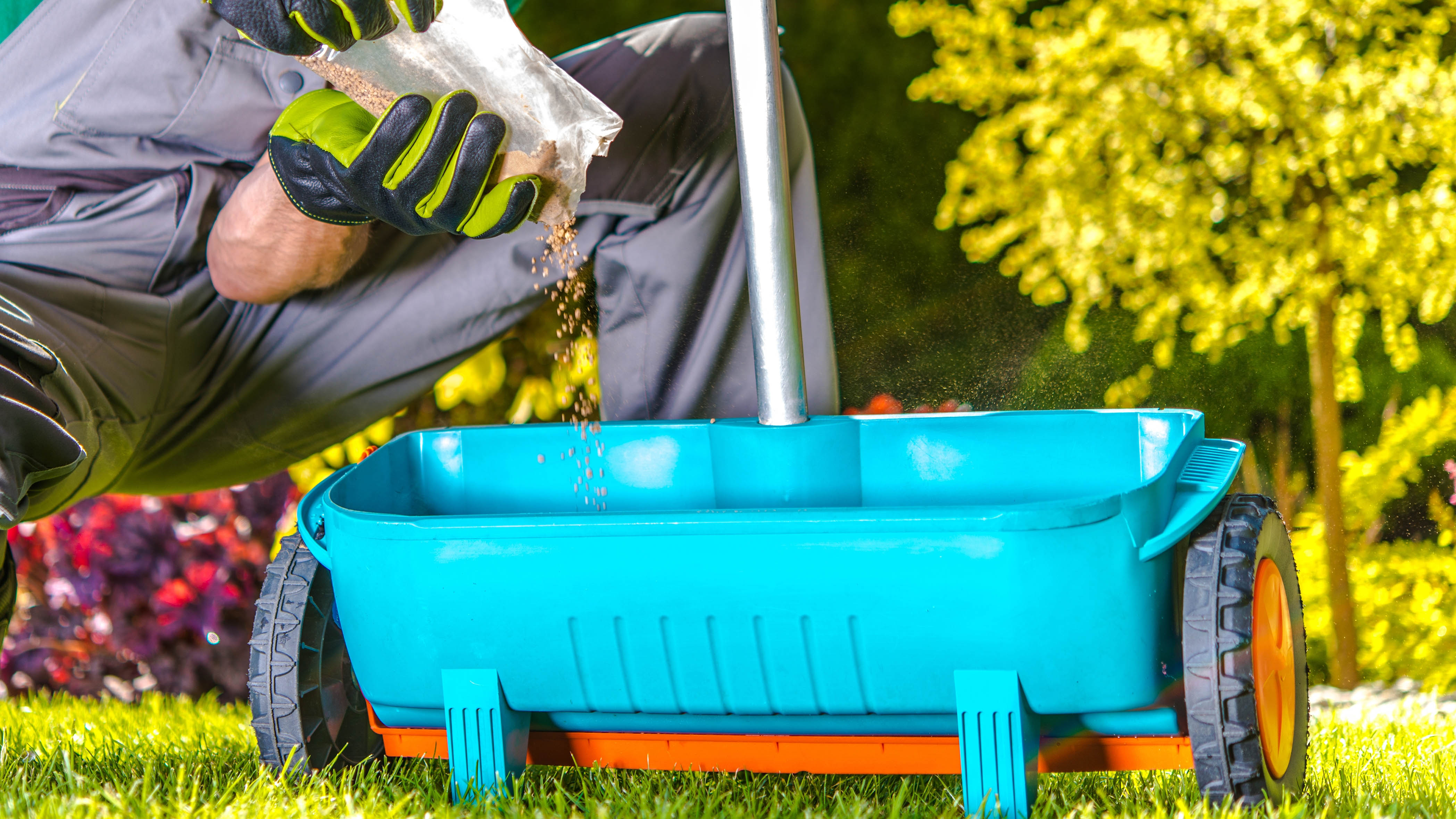
Lawns need a consistent supply of nitrogen, phosphorus, and potassium to help develop and stay healthy. Depending on your soil type (clay or sandy), there are suitable fertilisers in granular or liquid forms which can improve conditions.
In addition, you can naturally fertilize using compost or grass clippings, both of which double up as a great defence against weeds. This is one of the 9 ways you can reuse grass clippings after mowing.
To find out what your soil is lacking, use a soil test kit, such as MySoil Soil Test Kit ($29, Amazon).
Scotts Green Max Lawn Food, 16lb: was $37 now $33 @ Amazon
This dual-action fertilizer and iron formula will feed your lawn and provide deep greening in just three days. The product contains 5%iron, a micronutrient that enhances the greening process. This 16.67lb bag will cover an areas of 5,000 sq ft.
5. Plant new grass seeds or lay sod
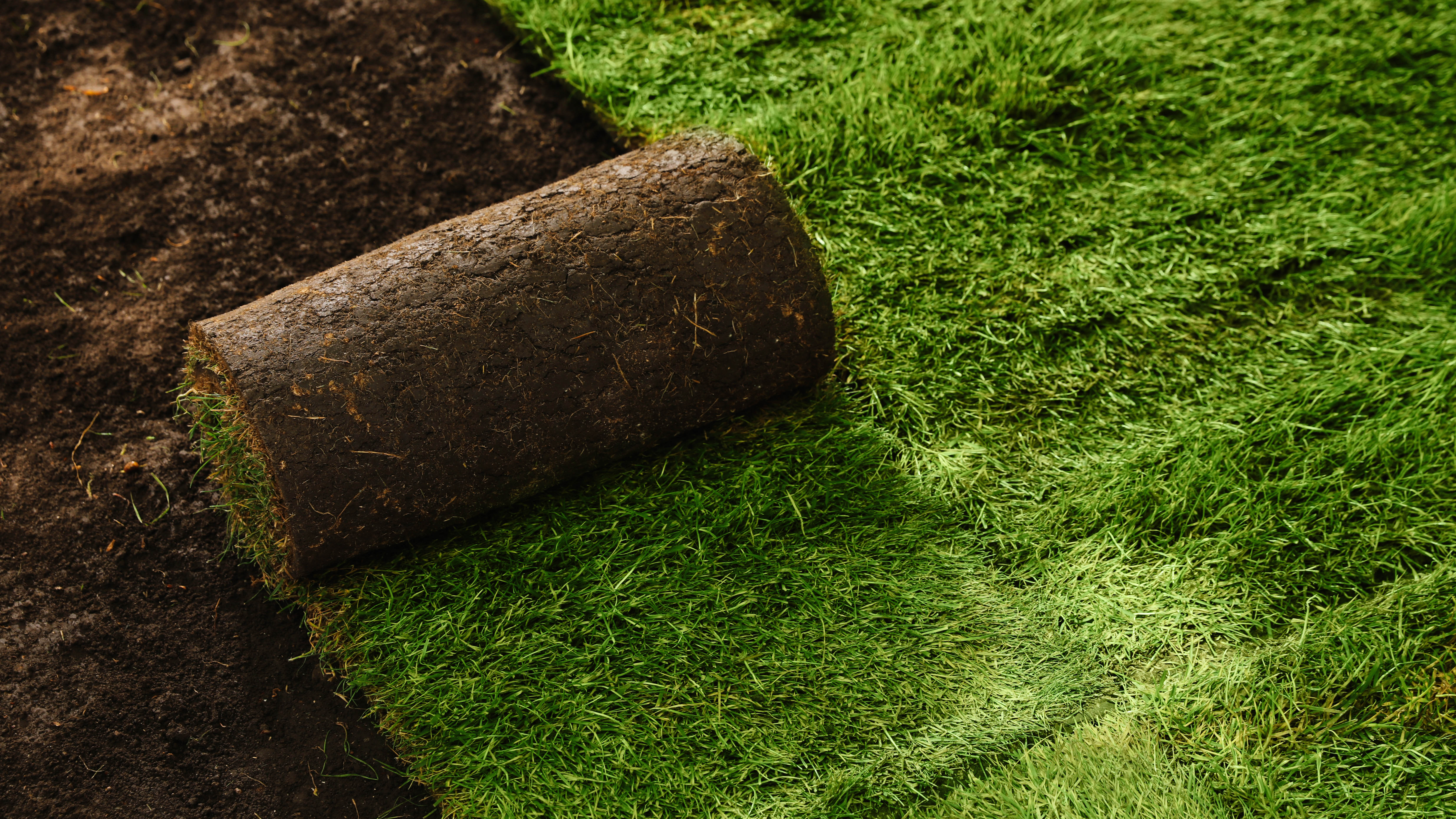
If your dried lawn is receding or patchy, you’ll need to know how to plant grass seed and get a greener yard. It’s always best to choose a high-quality grass seed and spread it evenly over your prepared lawn. Once the seed is completely laid down, cover it with a thin layer of soil.
Johnsons Lawn Seed recommend overseeding patches when the ground is warn and there is frequent rain. The process will thicken your lawn and crowd out unsightly weeds, as well as improve its health and appearance.
Alternatively, if you don't want to wait too long for your grass to grow, learn how to lay sod for an instant upgrade. Sod is grass that is already growing and comes in rolls or squares that you lay over your soil. If you are only filling in dead patches, you can simply use sod to plug wherever you need new grass.
6. Change grass type
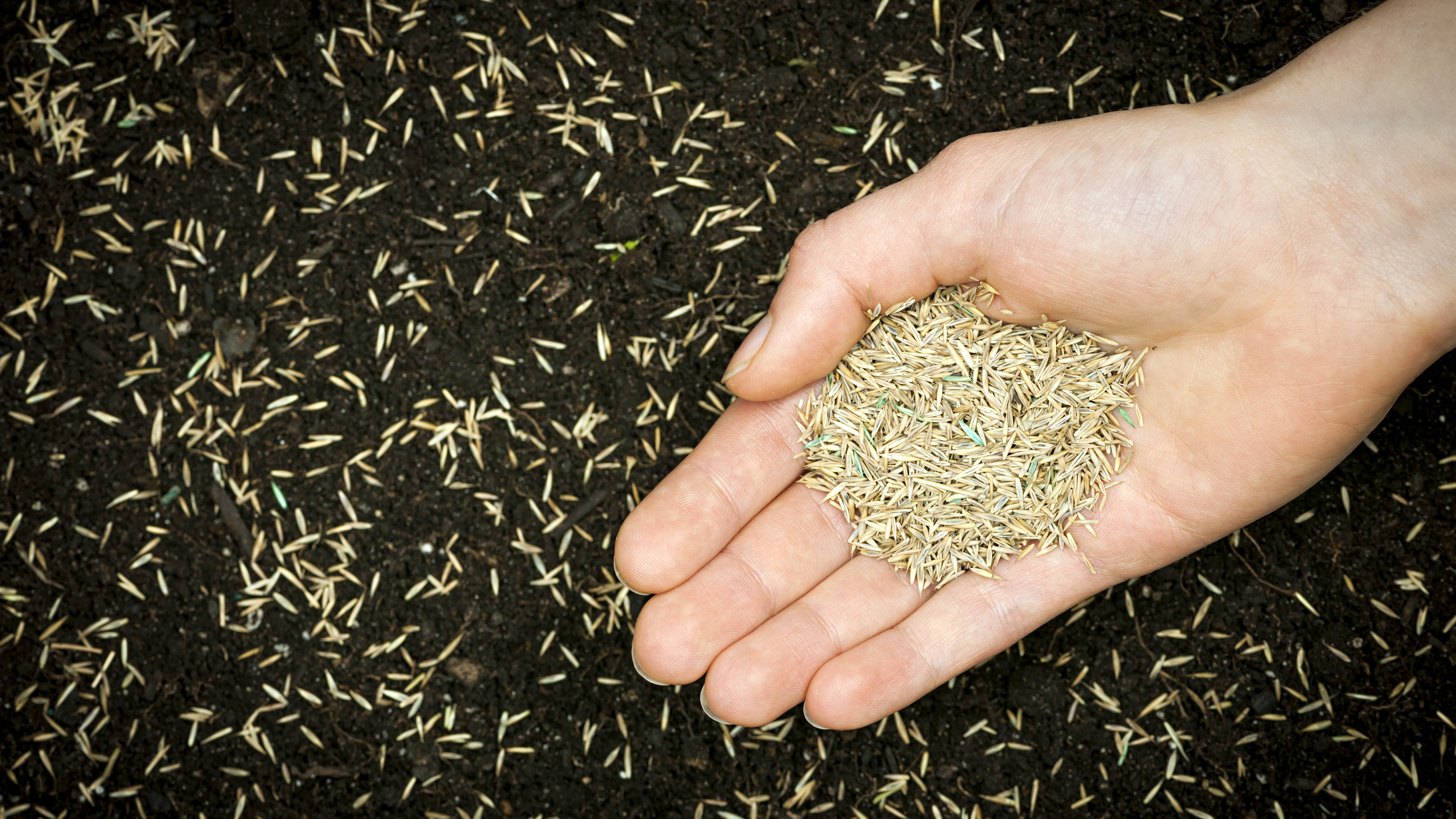
If your lawn has seen similar damage in previous years, and it needs immense repairs after each summer, it might be worth switching to a more appropriate grass type. Different grass types have different qualities, as well as being better suited to alternate regions. For instance, some grass types thrive in the shade, while others are disease resistant. Then there’s grass types which are drought tolerant, preferring full sun exposure and higher temperatures.
These are the types you may want to consider planting for less maintenance in the future, particularly if you’re prone to hot summers. It includes the likes of Bermuda grass, Zoysia grass and Buffalo grass, which are all warm-season types suited for the southern region. Tall fescue is a drought tolerant option for cool-season types of grass. Be sure to check the type of grass you’re considering is appropriate for your location via your local garden center. Here’s our guide on 7 of the best grass types to grow for more info.
Alternatively you can plant 7 fast-growing trees for shade and privacy, to create more shade in the future for your lawn.
Scotts Turf Builder EdgeGuard Deluxe Broadcast Spreader: was $92 now $77 @ Amazon
Suitable to spread grass seed, fertilizer, and salt and ice melt, this spreader can hold up to 15,000 sq ft of product. With Scotts EdgeGuard technology it keeps lawn products off your landscaping, driveways and sidewalks and comes comes pre-calibrated and ready-to use.
7. Water frequently
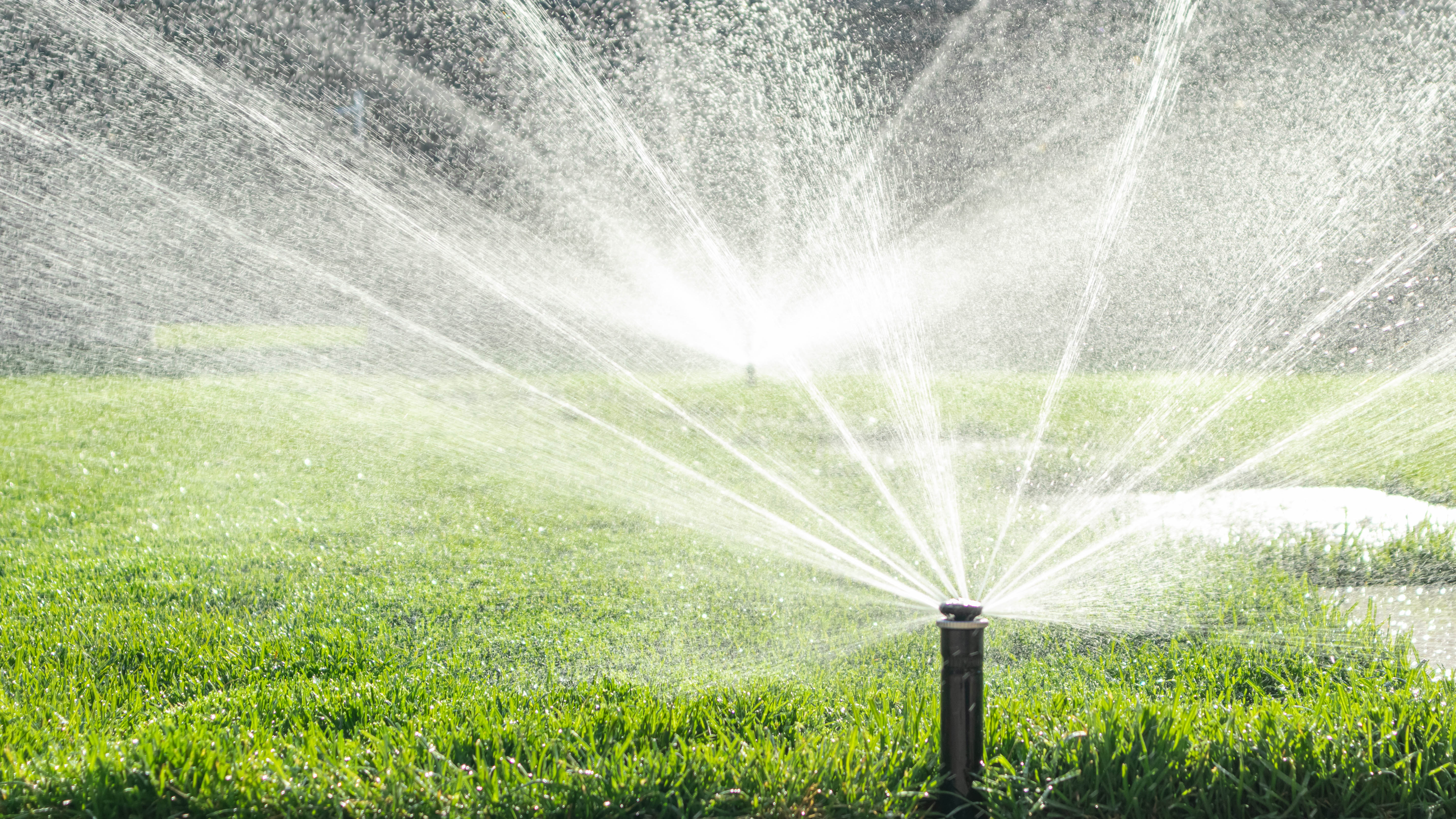
Dried lawns are a sure sign of dehydration, so you’ll need to soak the lawn thoroughly. Bear in mind that you need to water at the right times. Experts advise the best time to water your lawn is early morning or late evening when it’s cooler. Watering during hot periods of the day will evaporate most of the moisture, so it won’t be absorbed into the soil.
It’s best to use a sprinkler system to ensure the lawn gets a thorough soak. There are many affordable sprinkler systems available, like this Goldflower Garden Sprinkler ($8, Amazon).
Top tip
Although your lawn will need a good soak, the Lawn Association warns against over-watering dry patches, as they're likely to rebound when the rain returns.
8. Top dress the lawn
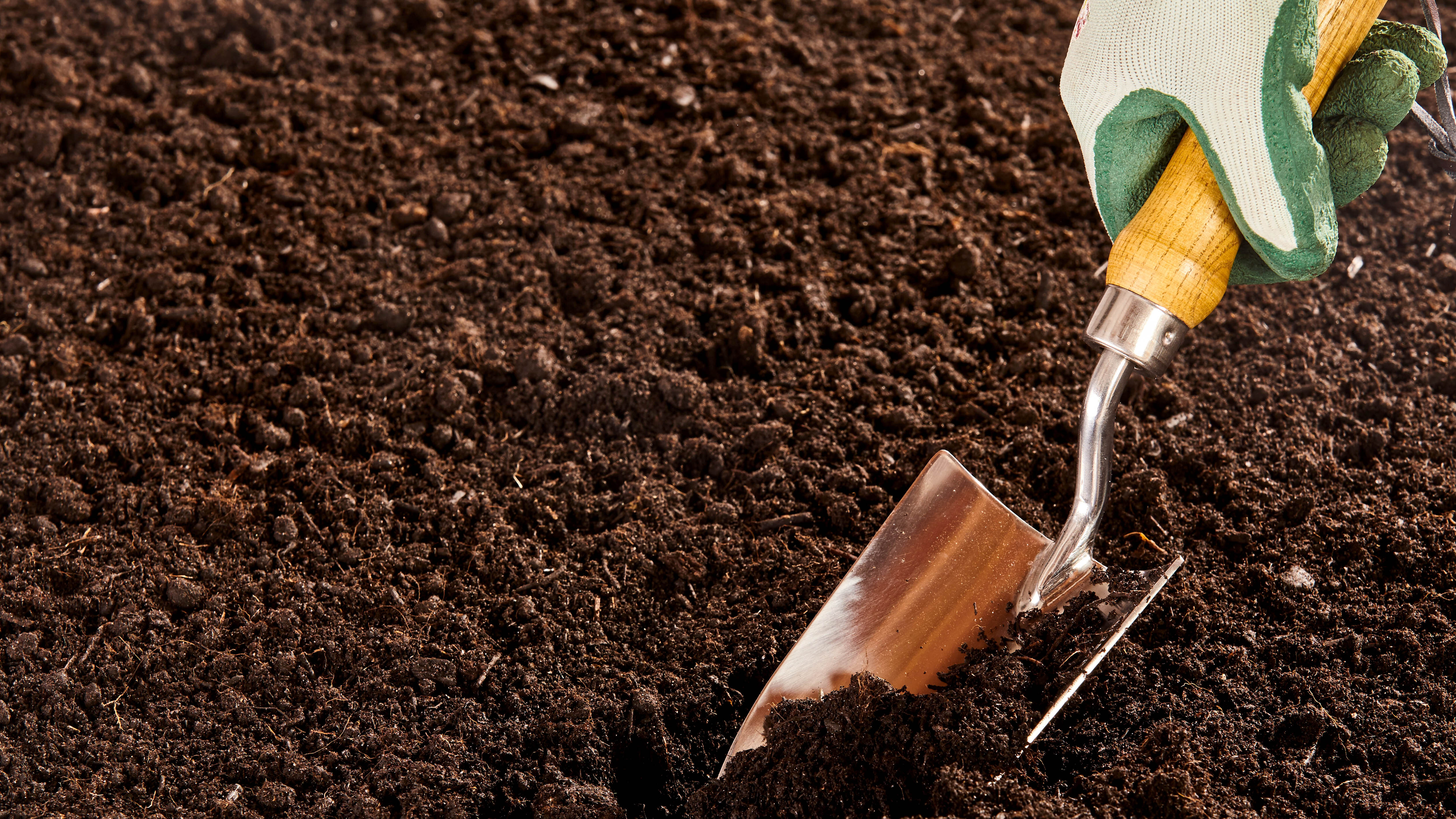
Topdressing involves applying a layer of compost or other nutrient-rich soil over the surface of your lawn. This will give the dried lawn a nutrient boost and improve the structure of the soil at root level, again helping absorbency.
With the help of aeration and a better water flow, the lawn can absorb the nutrients naturally through decomposition, helping the grass grow thicker. In addition, you can top dress the lawn with sands or other mixtures, depending on your soil type.
How to tell your soil type
Grab a handful of soil and work it around in your hand to form a ball. If it forms a firm shape, it's clay soil and is rich in nutrients. If you can see sand particles and it crumbles easily, it is sandy soil and won't have the moisture and nutrient retentive properties of clay soil. If it holds together but is slightly crumbly, it's a loam soil, and is somewhere between clay and sandy soil. You can also purchase a kit, such as Dewilde Trading Co's Soil Testing Kit ($16, Amazon).
9. Cut back on mowing
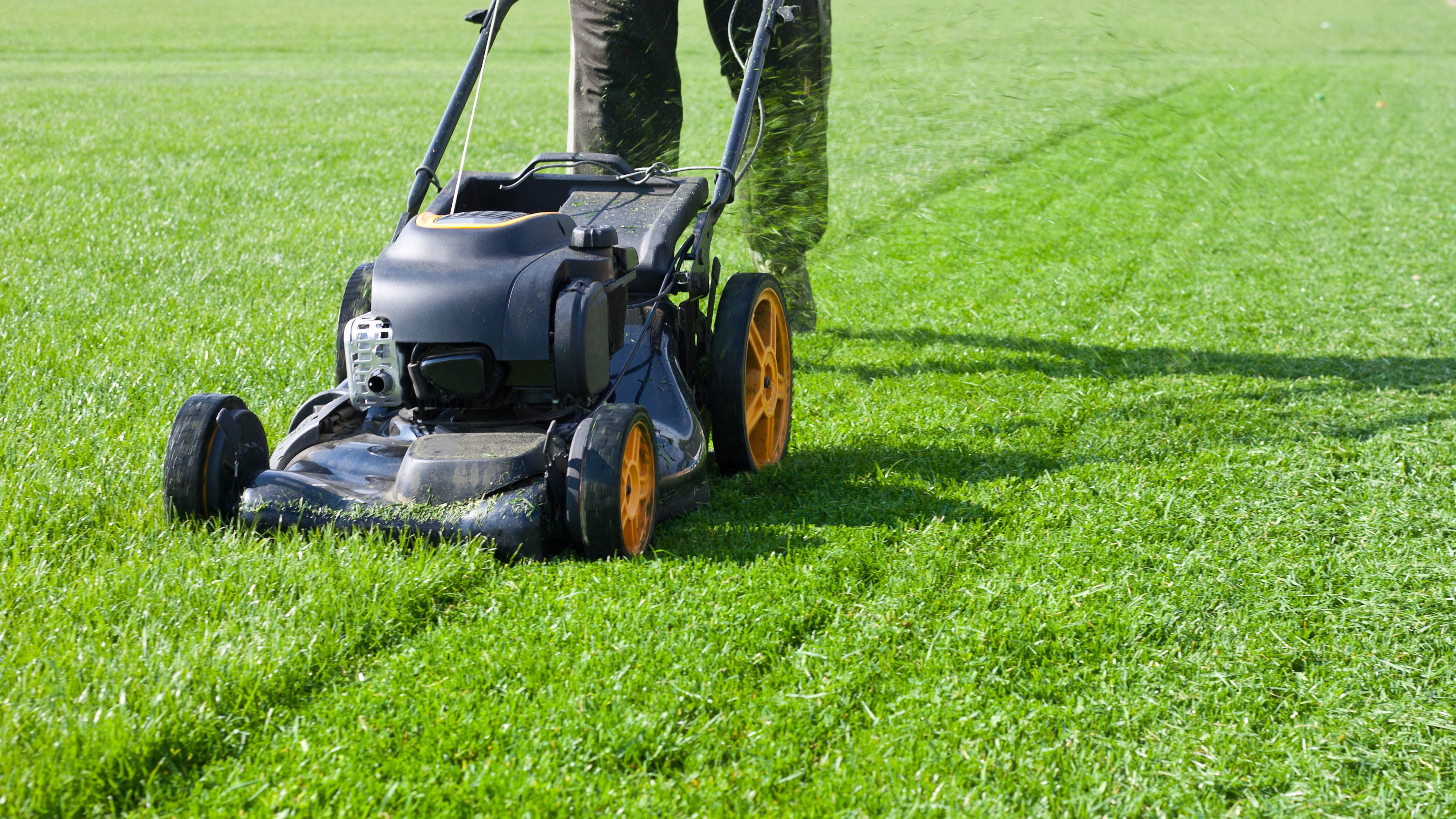
We mow frequently through the summer and naturally cut back in the fall. But, if your lawn appears dry and yellowed, you’ll want to keep your mower stowed away. Vulnerable grass can be easily damaged or even killed by a lawn mower, particularly when it’s cut overly short — here’s 9 signs that you’re cutting your grass too short for guidance. For this reason the Lawn Association suggests raising the cutting height of your mower and keeping the blade sharp as a dull blade can cause significant damage, especially if the grass is stressed during period of slow growth. Johnsons Lawn Seed recommend mowing your lawn no more than once every two weeks unless the weather is particularly mild.
Taller grass naturally has a better chance of survival. The longer leaves provide shade for the soil surface, which helps it retain moisture better. Plus, the leaves have more length to better photosynthesise. In short, there’s still a chance it will bounce back from the hot summer, but by mowing it, you will make the conditions more challenging. If you must cut the grass, make sure to keep your lawn mower on the highest setting to lessen the damage.
Other tips to keep your lawn green
- Don’t cut your grass too short. Experts advise cutting grass down to 2.5 to 3 inches, which is a healthy height
- Experts also suggest mowing your lawn at least once a week in summer and once every two weeks for the remaining seasons
- Make sure your lawn has good drainage to avoid it getting waterlogged
- Grass seed will need to be watered regularly to start with — 1 to 2 times per day, cutting this back once it reaches 1 to 2 inches in height
More from Tom's Guide

As the Homes Content Editor, Cynthia Lawrence covers all things homes, interior decorating, and garden-related. She has a wealth of editorial experience testing the latest, ‘must-have’ home appliances, writing buying guides and the handy ‘how to’ features.
Her work has been published in various titles including, T3, Top Ten Reviews, Ideal Home, Real Homes, Livingetc. and House Beautiful, amongst many.
With a rather unhealthy obsession for all things homes and interiors, she also has an interior design blog for style inspiration and savvy storage solutions (get rid of that clutter!). When she’s not testing cool products, she’ll be searching online for more decor ideas to spruce up her family home or looking for a great bargain!
- Katie MortramHomes Editor
